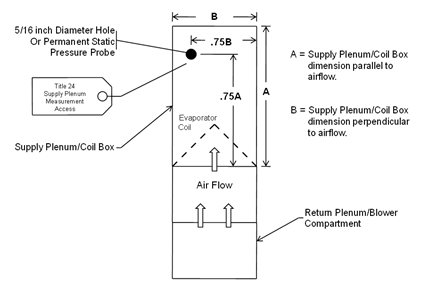Plan your cold air return ducts to fit comfortably in this area.
How to make a return plenum in floor joist.
This article addresses the issue of unsealed wall stud cavities or panned floor joists used as a return air plenum resulting in risks such as indoor air quality issues due to negatively pressurized cavities drawing air through cracks along with any contaminants and also condensation by drawing in warm humid air.
See reference 2 for pictures of s slips and drive cleats the return air duct should be installed tight to the bottom of the ceiling joists so it makes a tight seal with the panning.
Secure the duct to the ceiling joists with 1 inch galvanized hanger strap.
Corrective measures are also suggested.
It is impossible to create an airtight seal with this method and together with the negative pressure that is created inside the cavity air leakage occurs through joints of the rim at the end of the joist cavity.
The photo below shows some of the joists in the vented crawl space that the basement was completely connected to.
Building cavities used as return air plenums is one of the leading causes of duct leakage in homes today.
Inspectors can learn how air leakage from ductwork may cause home energy loss increase utility bills lower comfort levels and make the hvac system less efficient.
Panned floor joist are a commonly utilized as return ducts by nailing gypsum board foil insulation osb flooring panels or sheet metal to the joists.
For example an 8 by 14 inch rectangular duct will fit between 2 by 10 floor joists installed 16 inches apart on center.
Return air duct is connected together using s slips and drive cleats.
An enclosed portion of the building structure other than an occupiable space being conditioned that is designed to allow air movement and thereby serve as part of an air distribution system.

